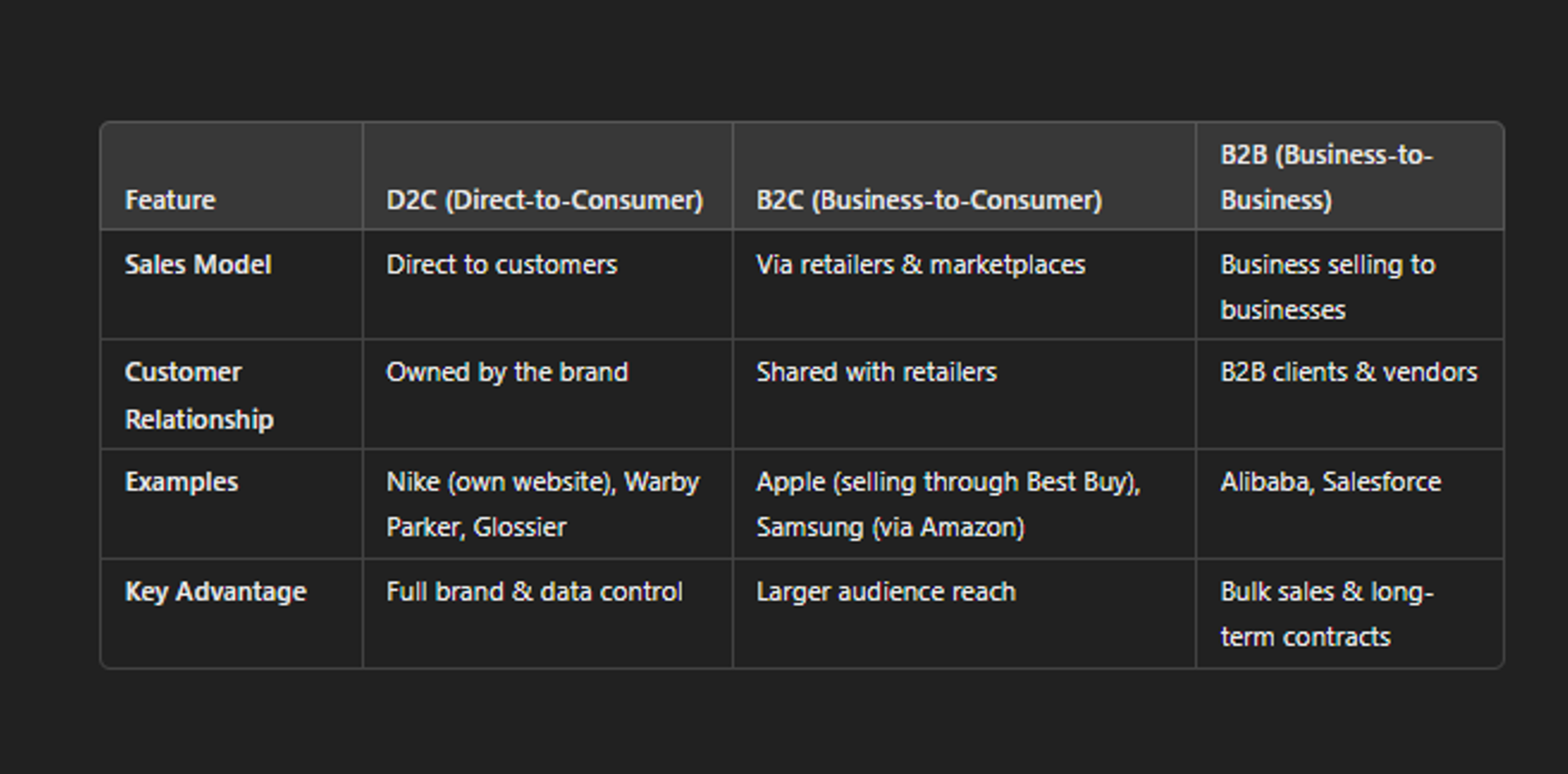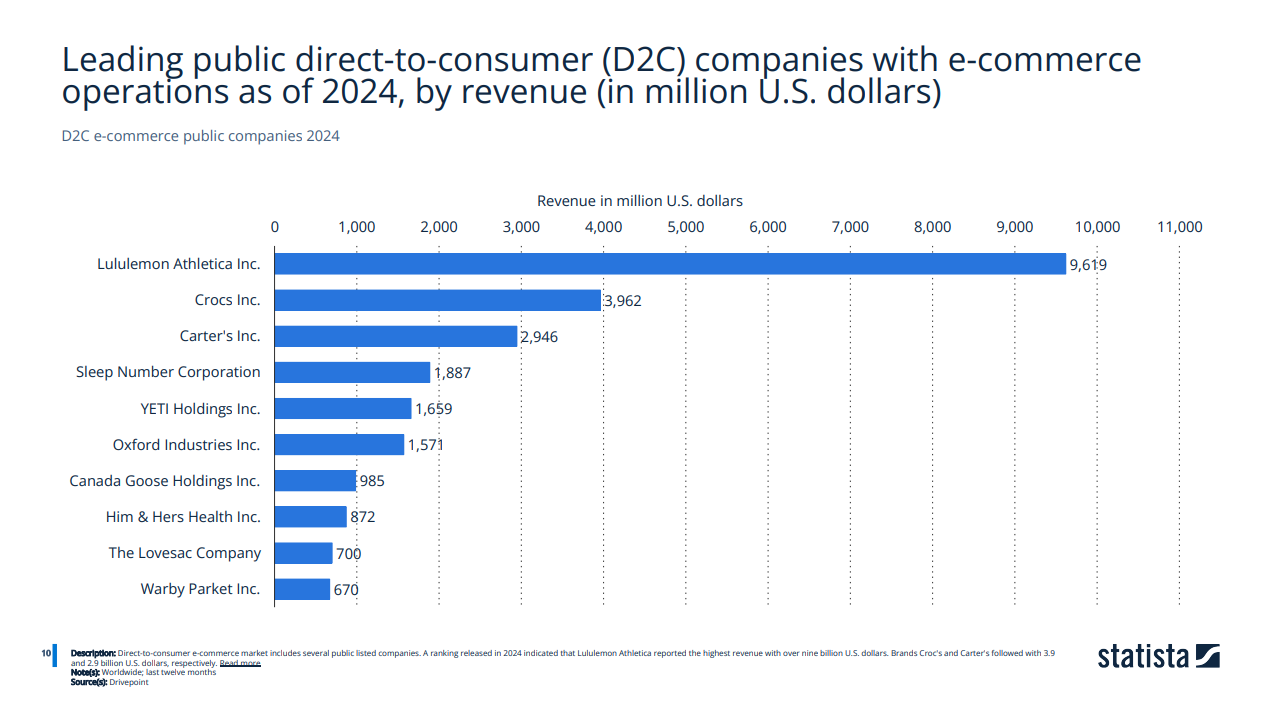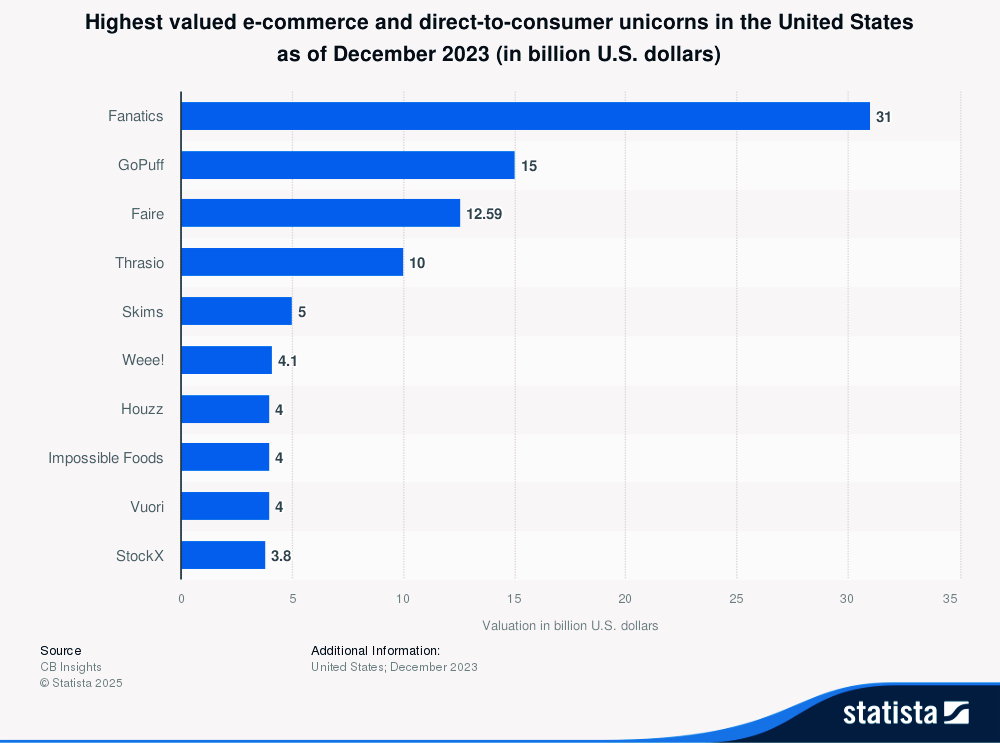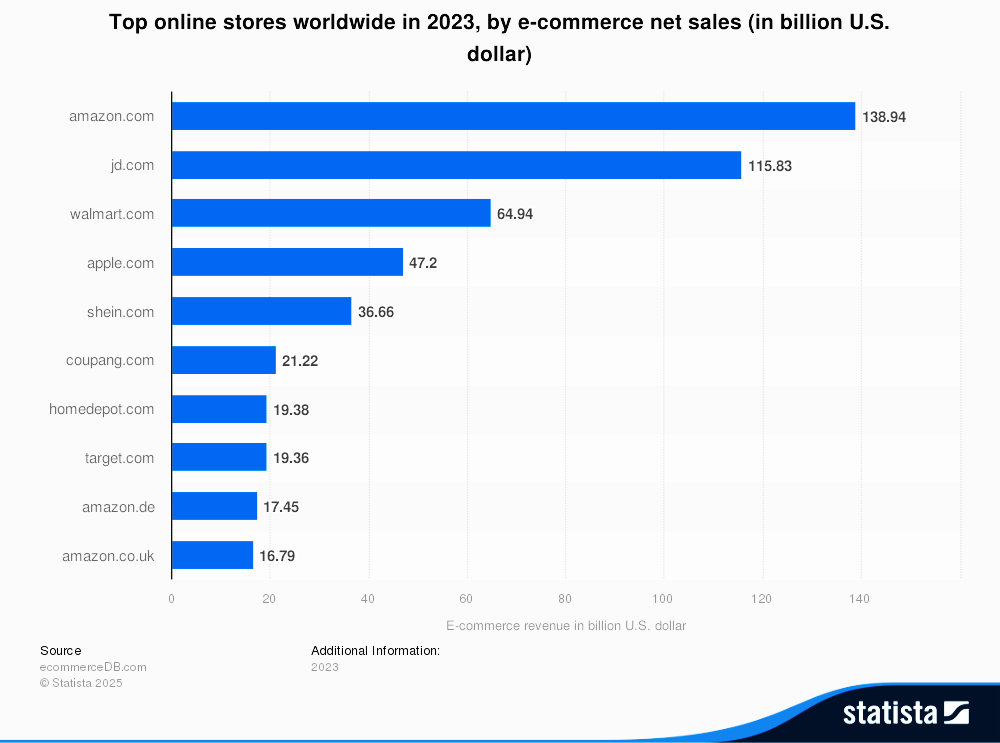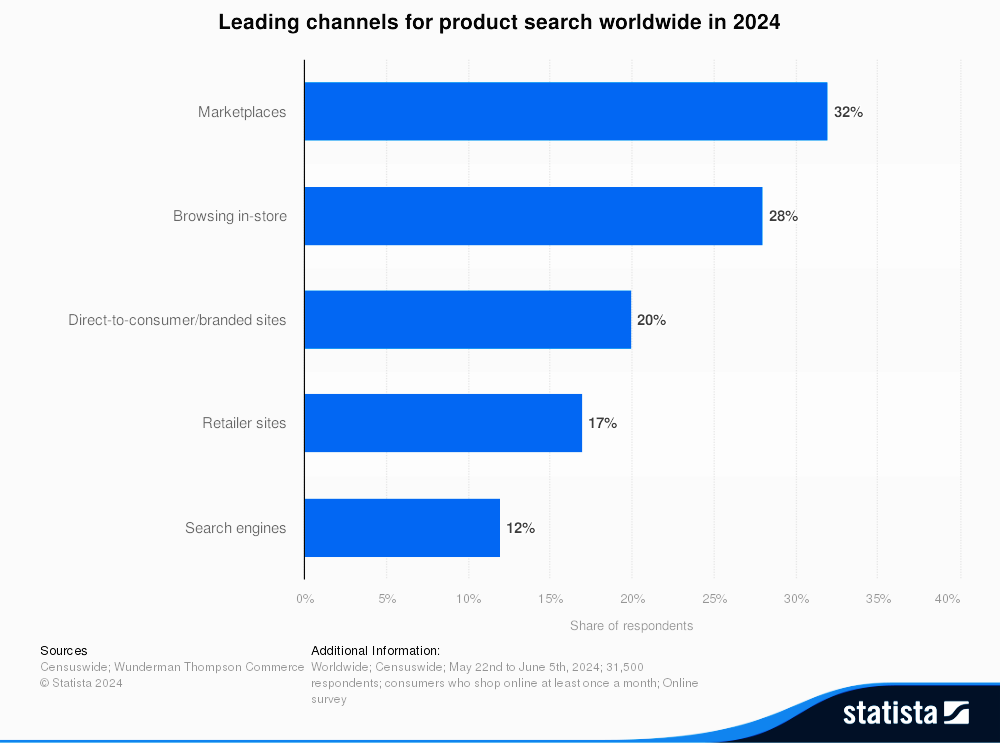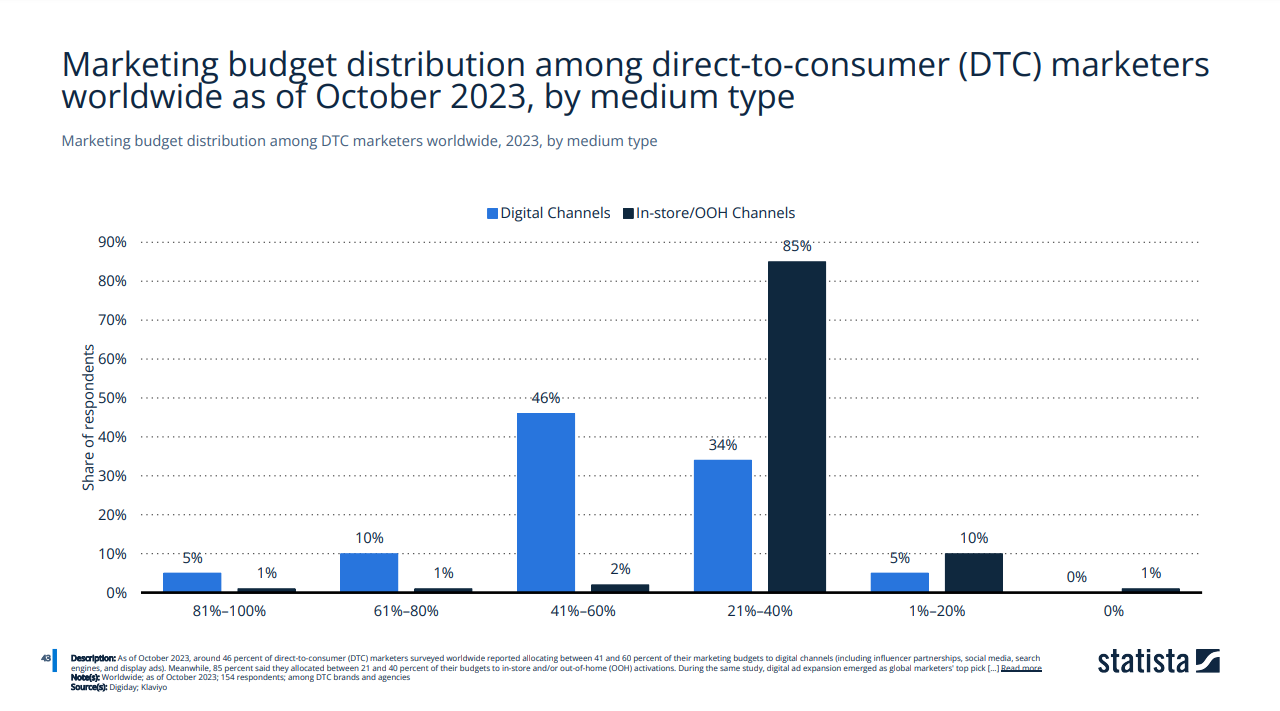2025 Guide To Direct-To-Consumer 'D2C'
More brands are bypassing middlemen, owning their customer relationships, and taking full control of their sales.
But is Direct-to-Consumer (D2C) just another trend, or is it reshaping the future of retail?
Let’s break it down, the key differences between D2C, B2B, and B2C, the biggest trends, and how brands, big and small are wining.
What is D2C?
Direct-to-Consumer (D2C) is a retail model where brands sell directly to customers through their own websites, social media platforms, or apps, without relying on third-party retailers, wholesalers, or marketplaces like Amazon, Walmart, or Carrefour.
The Rise of D2C Brands
Remember when Nike cut ties with Amazon to sell directly through its own website and apps? That’s D2C in action!
Other major players like Warby Parker (eyewear), Allbirds (footwear), and Glossier (beauty) have built billion-dollar brands by owning the entire shopping experience, from marketing to fulfillment.
The key advantage? Complete control over branding, pricing, and customer data, unlike selling through a retailer where brands lose visibility over their customers.
D2C is more than just selling, it’s about owning your customer experience, building loyalty, and driving long-term growth
D2C vs. B2C vs. B2B: What’s the Difference?
Not all direct sales models are the same. Here’s how D2C, B2C, and B2B compare:
The Key Difference?
D2C brands own their customers entirely, while B2C brands share customers with retailers.
The big challenge? Without third-party retailers, brands must build their own audience and manage logistics, fulfillment, and customer service in-house.
The Current D2C Landscape: A Market in Acceleration
D2C e-commerce sales are expected to hit $186 billion by 2025, up from $134 billion in 2023, highlighting a shift away from traditional retail
By 2026, 38% of all brands globally are expected to sell directly to consumers, signaling that more companies are cutting out intermediaries
In the US, D2C e-commerce is growing 3x faster than traditional retail
In Europe, D2C accounts for nearly 15% of total e-commerce sales, with major brands embracing first-party data strategies to personalize offerings
In India, the D2C market is booming, with top startups like Lenskart and FreshToHome raising millions in funding
In MENA, the D2C market is rapidly growing, fueled by high mobile penetration, younger demographics, and increasing digital adoption. Online shopping in the UAE and Saudi Arabia surged by 40% in the past two years, making the region a prime battleground for D2C expansions
Why are consumers shifting to D2C?
Brands that cut out the middlemen can pass the savings to customers, offering better deals, stronger loyalty programs, and better shopping experiences.
The Direct-to-Consumer (D2C) model is no longer a disruptor, it’s becoming a standard for brands looking to own their customer relationships, drive higher margins, and build loyal communities.
But success in the D2C space isn’t automatic. Brands, both established and emerging—need to adapt to evolving consumer behaviors, leverage new technologies, and refine their go-to-market strategies to stay competitive.
Top D2C Trends in 2025
1️⃣ AI-Driven Personalization
With AI-powered product recommendations, chatbots, and data-driven email campaigns, D2C brands are making shopping experiences hyper-personalized.
Example: Nike’s membership program tracks customer preferences and suggests personalized products.
2️⃣ Live Commerce & Social Selling
Live shopping is exploding globally.
TikTok Shop, Instagram Live, and YouTube Shopping
Shein & Zara are investing heavily in live-streamed sales
China already leads the pack, where live streaming drives 25%+ of all e-commerce sales. The West is catching up fast, with brands experimenting with real-time sales events on social media
3️⃣ Subscription-Based Models
D2C brands are prioritizing repeat customers over one-time buyers.
Dollar Shave Club & HelloFresh have built billion-dollar brands through monthly subscriptions.
Beauty brands like Ipsy send out curated beauty boxes every month.
4️⃣ Sustainability & Ethical Shopping
Customers are demanding eco-friendly and transparent brands.
Allbirds, Everlane, and Patagonia are gaining massive loyalty with sustainable sourcing and ethical production.
More brands are focusing on Plastic-free packaging, Ethical supply chains & Transparent carbon footprints
5️⃣ The Rise of Founder-Led Brands & Creator Economy
More brands are built by influencers & content creators.
MrBeast’s Feastables (snacks)
Emma Chamberlain’s Chamberlain Coffee
Kylie Jenner’s Kylie Cosmetics
These brands thrive because of strong storytelling, authentic marketing, and a direct connection to their audience.
Nearly half of shoppers are open to buying food and beverages directly from brands, signaling a major DTC opportunity
The Top D2C Unicorns in the U.S.: Who’s Leading the Charge?
The top D2C unicorns in the U.S. are reshaping e-commerce, with Fanatics ($31B), GoPuff ($15B), and Faire ($12.59B) leading the charge. From instant delivery to sustainable fashion, these brands are redefining direct-to-consumer success.
The rise of these unicorns highlights key trends in D2C:
Vertical integration & supply chain control: Brands like Skims and Impossible Foods own their manufacturing to optimize margins.
Tech-enabled commerce – Platforms like Faire and StockX leverage data and automation to scale efficiently.
Community-first marketing: Many unicorns thrive on social commerce, influencer partnerships, and direct consumer engagement.
The biggest DTC unicorns are reshaping the landscape, with Fanatics and GoPuff leading in valuation.
Should D2C Be Your Only Channel?
Pros of D2C:
Higher profit margins (no retailer commissions)
Full control over branding & customer experience
Direct access to customer data
Challenges:
High customer acquisition costs (Facebook & Google ads are expensive)
Managing logistics & returns
Competing with Amazon & other marketplaces
The Winning Formula?
Most brands blend D2C with other retail channels, using Amazon & Walmart for reach, but driving repeat customers to their own sites.
Winning D2C Strategies for Brands in 2025
The secret sauce for D2C success? A multi-faceted strategy that blends data-driven marketing, technology, and customer engagement. Let’s break it down:
1️⃣ Customer Acquisition: The Costly Challenge
One of the biggest barriers for D2C brands is rising customer acquisition costs (CAC). Facebook and Google ad costs have surged by 89% in the past two years, making it more expensive than ever to acquire new customers
Winning Strategy: Leverage Social Selling & Influencer Marketing
40% of Gen Z shoppers discover brands via social media.
Live shopping & influencer-led campaigns have a 4x higher engagement rate than traditional ads.
Brands like Shein & Zara are mastering influencer marketing, using micro-influencers and TikTok collaborations to drive organic traffic
Example: Gymshark scaled its D2C brand by partnering with fitness influencers instead of relying on paid ads, leading to 900% growth in just five years.
2️⃣ Customer Retention: The Key to Profitability
Acquiring customers is expensive, so retaining them is critical. The average D2C brand needs a customer to purchase at least 3x to break even due to high CAC. 75% of first-time buyers never return unless brands implement smart retention strategies
Winning Strategy: Subscription Models & Loyalty Programs
Nike’s membership program generates 40% of its D2C sales, offering exclusive perks, early drops, and personalized recommendations.
HelloFresh and Dollar Shave Club have mastered subscriptions, creating predictable revenue streams with personalized offerings.
Example: Allbirds boosts retention by offering loyalty discounts, sustainability initiatives, and personalized product recommendations, leading to higher repeat purchase rates.
3️⃣ Tech & AI: The Game Changer
AI is revolutionizing D2C brands by enabling hyper-personalization, automation, and predictive analytics. 71% of D2C brands are investing in AI-driven product recommendations, automated chatbots, and data-driven customer insights
Winning Strategy: AI-Powered E-Commerce & Smart CRM
AI-driven personalized shopping experiences increase conversion rates by 30%.
Chatbots & AI assistants improve customer service response times by 50%, reducing cart abandonment rates.
Predictive analytics helps brands forecast demand and optimize inventory management.
Example: Warby Parker uses AI-powered virtual try-ons to personalize shopping, increasing customer satisfaction and lowering return rates.
4️⃣ Omnichannel Approach: Blending D2C with Retail & Marketplaces
D2C does not mean abandoning retail completely. Many successful brands balance selling on their own platforms, marketplaces, and physical stores. 67% of D2C brands use an omnichannel strategy, leveraging Amazon, Walmart, and social commerce alongside their own sites
Winning Strategy: Drive Traffic to Owned Channels
Brands use Amazon for reach but drive repeat customers to their own website with incentives like exclusive offers & subscriptions.
Retail partnerships (e.g., Nike selling via Foot Locker while growing its D2C sales).
Example: Apple sells on Amazon but offers exclusive discounts & benefits to customers who shop directly via its website or stores.
D2C in Europe & MENA: A Deep Dive into the Market, Growth, and Top Players
In Europe and MENA, D2C brands are gaining significant traction as consumers increasingly seek direct engagement with brands, bypassing traditional retail middlemen.
Driven by digital transformation, changing consumer behavior, and increasing mobile and social media commerce, D2C brands in these regions are leveraging personalization, community-driven commerce, and direct engagement to dominate the retail landscape.
But what’s fueling this shift? Let’s break it down.
D2C e-commerce sales in Europe are expected to surpass $200 billion by 2026, as more brands embrace a first-party data strategy to personalize offerings
In 2023, 20% of online shoppers in Europe preferred buying directly from brands, rather than through marketplaces like Amazon or Zalando
CAC (customer acquisition costs) in Europe have surged by 40% in the past three years, making retention and brand loyalty more critical than ever
In MENA, the D2C market has witnessed 35% YoY growth, fueled by rising digital adoption, mobile commerce, and an increasing preference for localized and personalized shopping experiences
Saudi Arabia and the UAE lead the D2C growth in MENA, with a combined market share of over $30 billion in online retail sales, of which D2C brands account for a rapidly growing share
80% of Middle Eastern shoppers say they are more likely to trust a brand that sells directly to them, rather than via a third-party marketplace
📍 Key Trends Driving D2C Growth in Europe & MENA
1️⃣ Mobile-First Shopping:
In MENA, 70% of online shoppers use mobile devices to make purchases, making mobile-first D2C strategies essential
European brands are increasingly optimizing for seamless mobile experiences, leveraging one-click checkout, AI-driven recommendations, and hyper-personalized shopping experiences.
2️⃣ Social Commerce & Creator Economy:
43% of Gen Z & Millennials in Europe say they have bought products directly from social media platforms, particularly Instagram and TikTok
In MENA, influencer-led D2C sales have grown by 50% YoY, with brands partnering with local creators to boost credibility and conversions
3️⃣ AI & Personalization:
71% of European D2C brands are investing in AI-powered recommendations and chatbots to enhance the shopping experience
In MENA, AI-driven personalization is seeing major adoption, particularly in beauty, fashion, and electronics. Brands like Eyewa and Mumzworld are leading the way
4️⃣ The Rise of Subscription Models & Memberships:
Nike generates 40% of its D2C revenue from membership programs and exclusive perks
In MENA, subscription-based commerce has grown by 60% in the last two years, with brands in fashion, beauty, and food leading the charge
Top D2C Players in Europe & MENA
Europe is home to some of the world’s most successful D2C brands, while MENA’s D2C market is evolving fast, with startups leveraging social commerce, influencer marketing, and AI-driven personalization to scale.
Europe’s Top 5 D2C Brands
Gymshark (UK): A fitness apparel powerhouse, built through influencer marketing & social commerce, now valued at $1.5 billion.
Vinted (Lithuania): A fashion resale giant leveraging community-driven commerce to dominate Europe’s second-hand fashion market.
Back Market (France): A leader in refurbished electronics, tapping into sustainability-driven D2C e-commerce.
Snocks (Germany): A D2C apparel brand that scaled through Amazon, before transitioning to a direct-first model to boost margins & brand loyalty.
Estrid (Sweden): A rising star in subscription-based beauty & personal care, growing rapidly by offering affordable, high-quality razors.
MENA’s Top 5 D2C Brands
The Giving Movement (UAE): A sustainable fashion D2C brand disrupting the MENA market with its eco-conscious activewear and streetwear, built on a direct-to-consumer model that prioritizes ethical production and community-driven impact.
Eyewa (UAE): A fast-growing eyewear brand, using AI-powered recommendations & social commerce to dominate the market.
Mumzworld (UAE): A leading mother & baby e-commerce brand, built on trust, content-driven marketing, and a community-led approach.
Sary (Saudi Arabia): A B2B-D2C hybrid, revolutionizing the wholesale and retail supply chain in the region.
Halm (Saudi Arabia): A luxury leather goods brand that sells exclusively D2C, combining craftsmanship with a high-touch digital experience.
The D2C market is growing rapidly, but the brands that win in the next five years will be those that:
Leverage AI & personalization to create hyper-relevant shopping experiences.
Master social commerce & influencer marketing to build authentic customer relationships.
Combine D2C with other channels (omnichannel strategy) to maximize reach & revenue.
Adopt subscription models to increase customer retention & lifetime value.
Invest in sustainability & brand transparency, as conscious consumerism rises.
The future of retail belongs to brands that own their customer relationships. D2C isn’t just about selling, it’s about building trust, creating experiences, and turning transactions into long-term loyalty.
🤔 Is D2C part of your growth strategy? Are you already selling directly to your customers, or still figuring out how to make it work for your brand? Drop your thoughts in the comments, I’d love to hear what’s working (or what challenges you’re facing)!
📌 Know someone who could benefit from this? Tag them and let’s keep the conversation going!
♻️ If you found this insightful, share it forward, someone in your network might find it just as valuable.
If you're looking to understand how D2C can transform your brand, strengthen customer relationships, and maximize profits, let’s talk! and If this hit home, you’ll love our weekly Monday drop, real, bold, unfiltered, practical and actionable conversations, straight to your inbox. Sign Up Today



